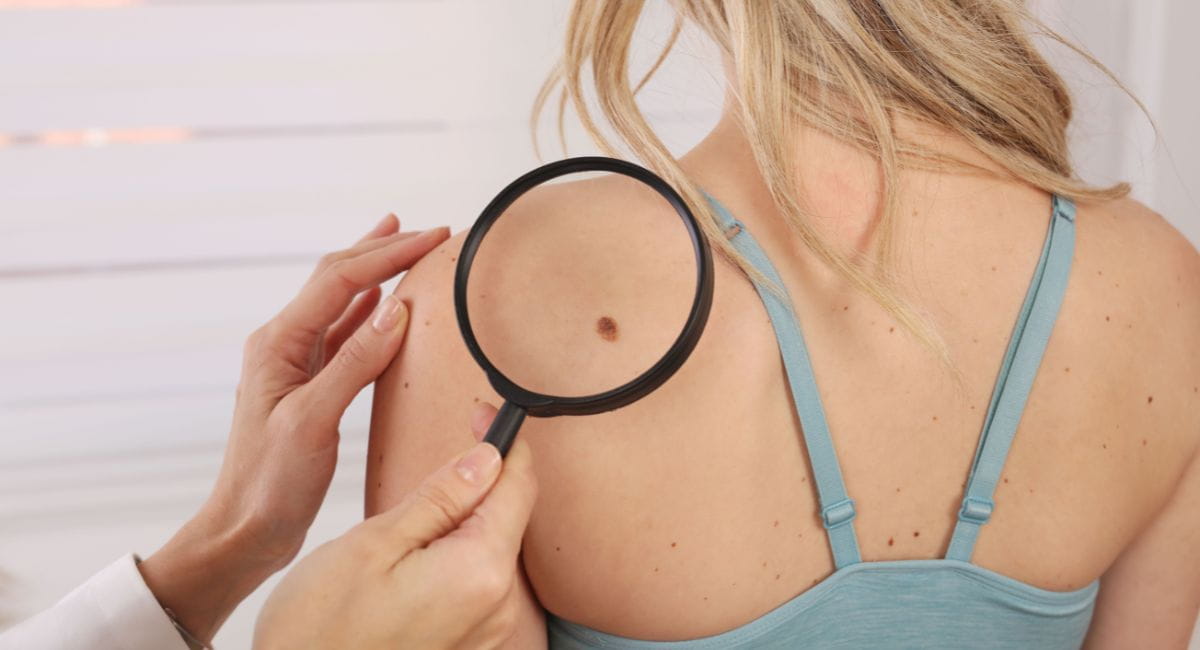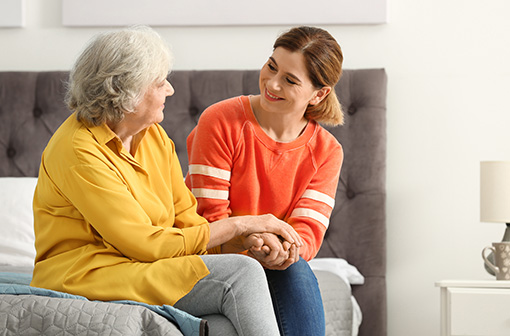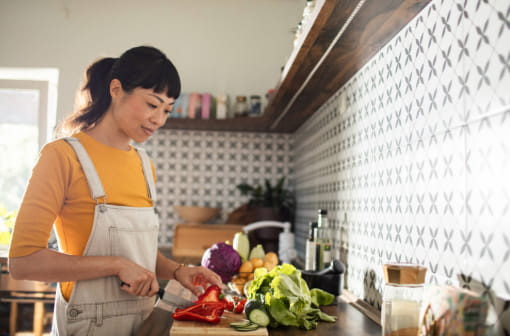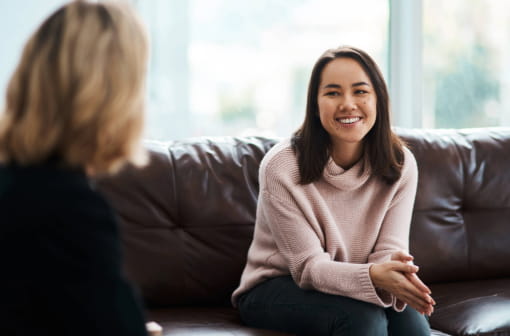"We need to make it about being comfortable in our own skin and not glamorising tanning or trying to change our body to be something unnatural.”—Professor Anne Cust, Chair of Cancer Council’s National Skin Cancer Committee
Key points
- According to Cancer Council, around two-thirds of Australians will develop some form of skin cancer in their lifetime.
- Melanoma is the most deadly form of skin cancer, but it’s mostly preventable.
- To protect your skin and reduce the risk of melanoma, wear sunscreen, a hat and sunglasses when you’re outside, and regularly check your own skin for signs of cancer.
Sun exposure damages our skin, causing 80 percent of all visible aging and, for two-thirds of Australians, some form of skin cancer in their lifetime. But head out on a scorching summer day and you’ll see countless Australians lying on the beach or by the pool, soaking up the sun.
It’s a sight that needs to change, says Professor Anne Cust, Chair of Cancer Council’s National Skin Cancer Committee and Professor of Cancer Epidemiology at the University of Sydney. "We need to make it about being comfortable in our own skin and not glamorising tanning or trying to change our body to be something unnatural.”
The worst offenders? Millennials and older Gen Zs. While we need to be sun smart at every age, it seems younger generations are having trouble letting go of the idea that a tan looks “healthy”. It’s a belief that’s contributed to melanoma—the most deadly form of skin cancer—becoming the most common cancer for Australians aged 20 to 39.
So, what is melanoma, and what can we do to avoid this very preventable cancer? Anne gives us the lowdown on what we need to know.
.jpg)
Melanoma: the “ugly duckling”
Melanoma is a cancer that commonly forms on the skin, although it can occasionally start in the eye or inside the body.
“Essentially, a melanoma is a dark spot on the skin that can look a bit funny, so sometimes one of the signs they talk about is it being an ‘ugly duckling’,” says Anne. It could be a spot that looks a bit different to the other spots or moles that you've got. And while it is often dark in colour, that’s not always the case. “Some melanomas don't have any pigment in them and they're harder to find.”
Melanoma occurs when the cells, known as melanocytes, start to grow in an uncontrolled way. If not detected early, some of those cancer cells can break off into the bloodstream or the lymph system, and then spread to other parts of the body. The culprit to most melanomas developing? Sun exposure.
“In Australia, about 90 to 95 percent of skin cancers in Australia or melanomas, in particular, are caused by ultraviolet radiation exposure from the sun,” explains Anne. “Melanoma is rarer [than other forms of skin cancer], but it’s still the third most common cancer in Australia. We have the highest rates of melanoma and other skin cancers in the world by far.”
Understanding the risk factors
If you’ve got fair skin or hair, lots of freckles or moles, or a family history of skin cancer, your risk is higher, says Anne. The same goes if you use sun lamps, solariums, or what’s now being branded as “collarium” sunbeds. But anyone that spends a lot of time in the sun is at risk.
“Basically, if your skin is tanning that is a sign that you’re doing DNA damage to yourself, because that’s your body’s way of coping. Your body is saying: ‘Oh my God, I’m getting damaged. I’m going to try to produce this pigment to protect myself.’”
Once you’ve had one melanoma or other type of skin cancer, your chances of getting another increase too.

The importance of skin checks
Which naturally leads us to the importance of skin checks. Melanoma is preventable—but, if it does occur, the large majority of cases can be cured with surgery if the cancer’s caught early enough.
Check your own skin regularly, and head to a doctor if you notice any changes. Look out for:
- sores that don’t heal, or look “crusty”
- changes to moles and freckles, including their colour, shape, size or density
- ·new spots or moles
- red, pearly or pale lumps.
You, your partner or your family are mostly like to notice changes in your skin. Your doctor can also perform a skin examination using a dermatoscope (a hand-held device) to search for suspicious spots.
Treating melanoma
If your doctor suspects you have a melanoma on the skin, they’ll take a biopsy by cutting out a small sample. If the biopsy confirms melanoma is present, they’ll take a wider cut of the skin to make sure the whole lot is removed.
A “thin” melanoma means you won't need any further treatment, but you will need to have more regular skin checks, as you’ll have a higher risk of developing a new skin cancer.
“Thick” melanomas are different. “If a melanoma is not detected early and grows thicker, some of the cells can break off into the blood or the lymph system and spread to other parts of the body. Then you might need more observation, and other treatments like immunotherapies or targeted therapies,” says Anne.
Anne admits it can feel quite traumatic to have something chopped out of your skin, particularly if it’s in a difficult area. “So if it’s on the back of your thigh, it might be uncomfortable to sit. If it’s on your face, you might need some plastic surgery.”
.jpg)
Looking after your skin
Living in Australia, most of us know the sun-safe rules that protect our health and wellbeing—seek out the shade; wear sun protective clothing, a broad hat and wrap-around sunglasses; and apply sunscreen (at least SPF30) every two hours—even if we don’t necessarily stick to them 100 percent of the time. The trick, says Anne, is to be aware.
“Keep a spare hat, sunglasses and sunscreen in your car or handbag so you've got something you can use for protection. When you're putting on sunscreen in the morning, try to keep it near your car keys, make-up or toothbrush—somewhere you’ll see it, and then you will remember to apply it.”
Anne recommends using sunscreen every day that the UV index is predicted to be three or greater, including when the sky is overcast.
“When I left the house this morning, it was very overcast, but by lunchtime, it was really sunny,” she says. “Make sure you put sunscreen on in the morning to give yourself that base level of protection, so that if you popping out in the middle of the day, you're not caught out.”
“It's never too late to start using sun protection,” says Anne. ”A lot of people worry that the damage has already been done because of what they've done in the past. But the research clearly shows that, whatever age you are, if you start using some sun protection, you do reduce your future risk.”
Disclaimer:
Information provided in this article is of a general nature. Australian Unity accepts no responsibility for the accuracy of any of the opinions, advice, representations or information contained in this publication. Readers should rely on their own advice and enquiries in making decisions affecting their own health, wellbeing or interest. Interviewee titles and employer are cited as at the time of interview and may have changed since publication.
* Singles cover with Base Tier rebate and 4% direct debit discount


